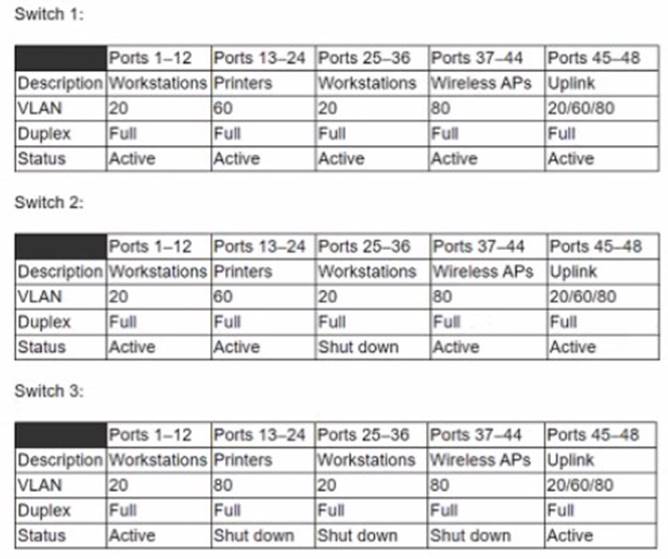- (Topic 3)
A network administrator walks into a data center and notices an unknown person is following closely. The administrator stops and directs the person to the security desk.
Which of the following attacks did the network administrator prevent?
Correct Answer:
B
Tailgating is a type of physical security attack in which an unauthorized person follows an authorized person into a restricted area, such as a data center, without proper identification or authentication. Tailgating can allow attackers to access sensitive data, equipment, or network resources, or to plant malicious devices or software. The network administrator prevented tailgating by stopping and directing the unknown person to the security desk, where they would have to verify their identity and purpose.
ReferencesDigital Threats and Cyberattacks at the Network LevelNetwork attacks and how to prevent them
- (Topic 2)
An organization wants to implement a method of centrally managing logins to network services. Which of the following protocols should the organization use to allow for authentication, authorization and auditing?
Correct Answer:
B
RADIUS (Remote Authentication Dial-In User Service) is a protocol that should be used by the organization to allow for authentication, authorization, and auditing of network services. RADIUS is an AAA (Authentication, Authorization, and Accounting) protocol that manages network access by verifying user credentials, granting access permissions, and logging user activities. RADIUS uses a client-server model where a RADIUS client (such as a router, switch, or VPN server) sends user information to a RADIUS server (such as an authentication server) for verification and authorization. The RADIUS server can also send accounting information to another server for billing or reporting purposes. References: https://www.cisco.com/c/en/us/support/docs/security- vpn/remote-authentication-dial-user-service-radius/13838-10.html
- (Topic 3)
Switch 3 was recently added lo an existing stack to extend connectivity to various parts of the network. After the update, new employees were not able to print to the main networked copiers from then workstations. Following are the port configurations for the switch stack in question:
Which of the following should be configured to resolve the issue? (Select TWO).
Correct Answer:
AE
- (Topic 3)
A customer hired a network consultant to install a new wireless network with the following specifications:
* 2.4GHz
* 11Mbps
* 20MHz
Which of the following standards best fits these requirements?
Correct Answer:
B
The 802.11b standard is a wireless networking protocol that operates in the 2.4GHz frequency band and supports a maximum data rate of 11Mbps. It uses a 20MHz channel width and a direct-sequence spread spectrum (DSSS) modulation technique2. The 802.11b standard was released in 1999 and is backward compatible with the original 802.11 standard3. The other standards do not match the specifications given by the customer. 802.11ac operates in the 5GHz band and supports higher data rates up to 6.9Gbps.
* 802.11g also operates in the 2.4GHz band but supports data rates up to 54Mbps. 802.11n can operate in both 2.4GHz and 5GHz bands and supports data rates up to 600Mbps. It also uses a wider channel width of 40MHz and a multiple-input multiple-output (MIMO) technology3.
References2 - 802.11 Standards Explained: 802.11ax, 802.11ac, 802.11b/g/n, 802.11a - Lifewire3 - Introduction to WLAN Frequency Bands | Engineering Education (EngEd …
- (Topic 2)
A systems administrator is running a VoIP network and is experiencing jitter and high latency. Which of the following would BEST help the administrator determine the cause of these issues?
Correct Answer:
B
SNMP (Simple Network Management Protocol) is a protocol that allows network devices to communicate with a network management system (NMS) for monitoring and configuration purposes. SNMP traps are unsolicited messages sent by network devices to the NMS when certain events or conditions occur, such as errors, failures, or thresholds. Configuring SNMP traps on the network would best help the administrator determine the cause of jitter and high latency on a VoIP network, as they would provide real-time alerts and information about the network performance and status. Enabling RADIUS on the network is not relevant to troubleshooting VoIP issues, as RADIUS is a protocol that provides authentication, authorization, and accounting services for network access. Implementing LDAP on the network is also not relevant to troubleshooting VoIP issues, as LDAP is a protocol that provides directory services for storing and querying information about users, groups, devices, etc. Establishing NTP on the network is not directly related to troubleshooting VoIP issues, as NTP is a protocol that synchronizes the clocks of network devices.